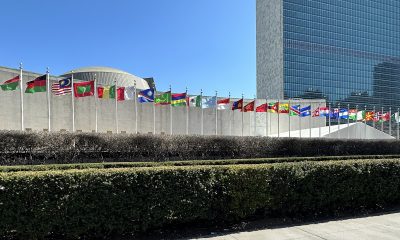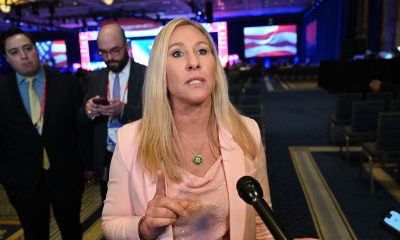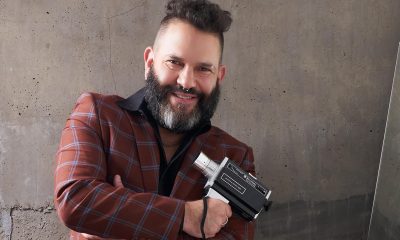Opinions
Rippon lucky to follow in Weir’s footsteps
Johnny’s ‘brand’ is a celebration of his weirdness
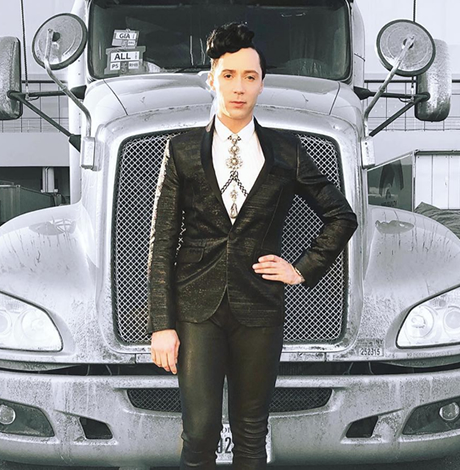
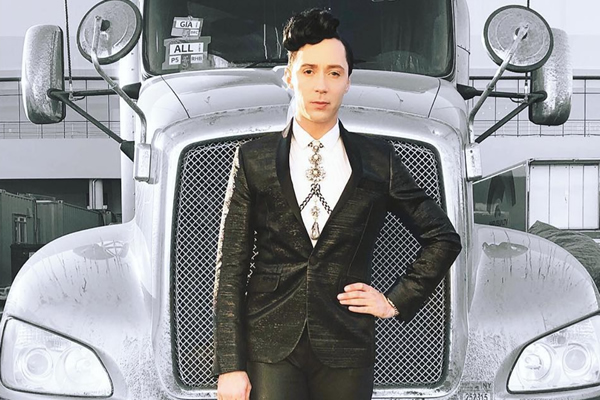
Johnny Weir (Photo courtesy of Instagram)
In the flush and fury of Adam Rippon’s explosive breakout post-Olympics in the last month, it is only inevitable that he would be swiftly elevated by many to near godlike status within the LGBT world. Such was the case with the commentary in your last week’s edition, “The Case for Adam Rippon as Our Highest Ranking Gay” by Brock Thompson, proposing that he be coronated as the new role model, or poster boy, for the LGBTQ community and the movement.
I have absolutely nothing against Adam. In fact, I like him, too. Who wouldn’t? I’ve watched him perform for years on the ice, including through the many painful years for him when he had to publicly deny his sexual orientation while sporting long curly locks, a high-pitched voice, some subtle mannerisms and boyish good looks. Anybody whose gaydar wasn’t completely disabled had to have had some sense of what he had to be going through, and thus celebrate his decision to come roaring out of the closet when he finally did.
We can all affirm, I think, that he became a much happier person and a much better skater when he did. On top of that, how much better to find that he has a sparkly, spunky personality to go along with his obvious intelligence and powers of verbal articulation, helping him to do very well on the TV talk show circuit thus far.
But is he our cause’s new “champion,” our “highest ranking gay (American male),” as Thompson proposed last week? Of course, such claims that have fueled the recent media hype around a rumored jealousy thing pitting fellow figure skater Johnny Weir against Adam. This rumor has made it into the tabloids, and while Adam admits there may be truth to it, Johnny has pretty much limited his comments to a gracious tweet congratulating Adam for his recent fame.
Gossips like nothing more than even a faint wisp of a cat fight among high-profile gays, of course, whether or not there’s any substance to it, but for the sake of our community, how can this do any good whatsoever?
As a figure skating fan for years, I recall when Adam turned 18 in November 2008 and Johnny, by then a three-time U.S. champion and Olympian, sent him a birthday greeting. Adam responded with an expression of appreciation and great admiration for what Johnny had accomplished as his role model.
Even in 2008, times were different. Neither Johnny nor, of course, Adam were “out.” Johnny was subject to a lot pressure on the subject but insisted on his right to be himself on his own terms. Still, when Johnny finally came out via his book after his competition in the 2010 Olympics in Vancouver, it was still years before Adam did.
Since then, Johnny retired from competition, but has carved a remarkable career as an announcer who, teamed with Tara Lipinski, was universally praised for his work covering this winter’s Olympics in South Korea. He was articulate, expert in his reporting, and his edgy fashion statements were just the icing on his cake.
So, without even considering for this argument Jim Parsons, Don Lemon or Tony Kushner as our American male “champion,” why is not Johnny a better choice?
I have to think it comes down to one commentator’s taste in “good looks,” frankly, and that is a sad criterion. Adam may be the flavor of the week for a lot of ogling men, but that’s pretty shallow and doesn’t do justice to Adam, himself. As far as being an outspoken critic of Vice President Pence, well, he’s recanted on that, telling one talk show host recently that he meant he was just too busy to meet the Veep at the Olympics, but hopes to meet him sometime soon.
In the final analysis, Adam has “branded” himself as a run-of-the-mill horny gay male, with his temporal good looks triggering temporarily a heated reaction. This kind of brand doesn’t lead. On the contrary, it leaves everyone who isn’t good enough to rise to his level in the dust. And that goes for supposed gay leaders who pass age 50 still obsessed with what hours in the gym every day can do for them.
On the other hand, Johnny Weir’s “brand” has always been a celebration of his, if you will, weirdness. Whether it has been his costumes or saucy demeanor, his red glove, “Camille,” on the ice or other gestures, he’s always had in mind standing on behalf of all children who see themselves as “different,” often saying as much. He leads because he brings everyone with him.
Johnny was the subject of death threats at the 2006 Olympics because that’s how things were then when he was “out there” for us all, all by himself.
Now, he’s a man with an incredibly accomplished career despite the odds, and I can only say if there’s a champion to be crowned, it’s him. Adam should be so lucky to follow in his footsteps down the road.
Nicholas Benton is a resident of Falls Church, Va. Reach him at [email protected].
Commentary
Second ‘lavender scare’ is harming our veterans. We know how to fix it
Out in National Security has built Trans Veterans State and Local Policy Toolkit

Seventy years after the first “lavender scare” drove LGBTQ Americans from public service, a second version is taking shape. Executive directives and administrative reviews have targeted transgender servicemembers and veterans, producing a new wave of quiet separations and lost benefits.
The policy language is technical, but the result is personal. Veterans who served honorably now face disrupted healthcare, delayed credentials, or housing barriers that no act of Congress ever required. Once again, Americans who met every standard of service are being told that their identity disqualifies them from stability.
Out in National Security built the Trans Veterans State and Local Policy Toolkit to change that. The toolkit gives state and local governments a practical path to repair harm through three measurable actions.
First, continuity of care. States can keep veterans covered by adopting presumptive Medicaid eligibility, aligning timelines with VA enrollment, and training providers in evidence-based gender-affirming care following the World Professional Association for Transgender Health Standards of Care Version 8.
Second, employment, and licensing. Governors and boards can recognize Department of Defense credentials, expedite licensing under existing reciprocity compacts, and ensure nondiscrimination in state veterans’ employment statutes.
Third, housing stability. States can designate transgender-veteran housing liaisons, expand voucher access, and enforce fair-housing protections that already exist in law.
Each step can be taken administratively within 90 days and requires no new federal legislation. The goal is straightforward: small, state-level reforms that yield rapid, measurable improvement in veterans’ daily lives.
The toolkit was introduced during a Veterans Week event hosted by the Center for American Progress, where federal and state leaders joined Out in National Security to highlight the first wave of state agencies adopting its recommendations. The discussion underscored how targeted, administrative reforms can strengthen veterans’ healthcare, employment, and housing outcomes without new legislation. Full materials and implementation resources are now available at outinnationalsecurity.org/public-policy/toolkit, developed in partnership with Minority Veterans of America, the Modern Military Association of America, SPARTA Pride, and the Human Rights Campaign.
These are technical fixes, but they carry moral weight. They reaffirm a basic democratic promise: service earns respect, not suspicion.
As a policy professional who has worked with veterans across the country, I see this moment as a test of civic integrity. The measure of a democracy is not only who it allows to serve but how it treats them afterward.
The second “lavender scare” will end when institutions at every level decide that inclusion is an obligation, not an exception. The toolkit offers a way to begin.
For more information or to access the toolkit once it is public, visit outinnationalsecurity.org/toolkit.
Lucas F. Schleusener is the CEO of Out in National Security.

For years, the far right has relied on a familiar infrastructure to wage its political battles: coordinated legal networks, back-channeled money, and an ever-growing pipeline of model legislation that moves quietly from one statehouse to another. What used to be a fringe ecosystem of activist lawyers has matured into something far more muscular. Today, the attacks on LGBTQ Americans—especially transgender people—are not random. They are designed, drafted, and deployed by a disciplined constellation of groups that understand how to move legislation with precision. And if Democrats, civil rights advocates, and national LGBTQ organizations continue treating each bill as an isolated outrage rather than a unified offensive, this machine will keep outpacing them.
Most Americans have never heard of outfits like the Alliance Defending Freedom, the American Principles Project, the Leadership Institute’s law arm, or the network of state-based policy shops that orbit the Heritage Foundation. But these entities now function as the shadow authors of state legislation. The anti-trans sports bans that appeared in more than 20 states did not arise organically; they were cloned from drafts circulated by ADF attorneys. The same is true for bills restricting gender-affirming care, limiting name and pronoun accommodations in schools, or expanding “religious liberty” carve-outs that allow discrimination against LGBTQ employees or customers. Legislators often change a few words, swap in a local sponsor, and reintroduce the same provisions session after session — giving the impression of momentum when, in reality, only a handful of ideologues are writing the nation’s culture-war script.
The operational model is simple: produce a bill, partner with a state-level think tank, recruit a legislator to introduce it, and provide legal testimony to defend it. But the strategic sophistication lies upstream. These groups have spent years cultivating relationships with attorneys general, state solicitors, and conservative judges who are sympathetic to their worldview. They draft legislation with litigation in mind, anticipating which language will survive scrutiny before the federal courts they have worked diligently to remake. They treat policy, politics, and jurisprudence as a seamless ecosystem; meanwhile, LGBTQ advocates are forced to fight on three fronts at once, often with smaller budgets and no comparable network of state-by-state affiliates.
What is most striking now is the acceleration. Bills that used to be test-driven in one or two states are being introduced in a dozen simultaneously. After the Supreme Court’s Dobbs decision, the same legal strategists pushing abortion bans pivoted almost immediately toward restricting trans health care, framing puberty blockers and hormone therapy as “sterilization.” The rhetorical shift was not accidental. It was a deliberate legal construction designed to open the door to future Fourteenth Amendment challenges, should the movement secure a case capable of reaching the Supreme Court. This is not simply a legislative fight; it is the groundwork for long-term judicial warfare.
And yet, Democrats and even national LGBTQ groups often treat these measures as if they were spontaneous outbursts of local prejudice. That is politically naïve. The reason similar bills appear in Idaho, Florida, Tennessee, Kansas, and Ohio at the same time is because they originate from the same set of PDFs stored on the same servers belonging to the same legal networks. The far right has embraced an industrial model of anti-LGBTQ policymaking: mass production, rapid deployment, and coordinated amplification by media channels that echo the same talking points across state lines.
The consequence is that the burden falls on queer people themselves—especially trans people—to respond to an avalanche of bills, hearings, lawsuits, and administrative changes that no individual or small advocacy team can fully track. When you have a network of attorneys feeding language to legislators, drafting amicus briefs, and preparing future litigation strategies in advance, you create an asymmetry that is difficult to counter with reactive press releases or one-off legal challenges. This imbalance of power is not about public opinion, which still supports LGBTQ equality by wide margins. It is about institutional positioning. The far right has placed its lawyers where the pressure points are: in state AG offices, in coordinated legislative caucuses, in judicial clerkships, and in the nonprofit legal trenches where issue fights are shaped long before the public hears about them.
There is a path forward, but it requires abandoning the old model of treating each bill as a separate emergency. LGBTQ organizations need a unified, long-range strategy that mirrors the discipline of the groups attacking them. That means state-by-state legal surveillance, rapid drafting of counter-model legislation, formal partnerships with progressive state AGs, and a standing litigation coalition capable of anticipating—not just responding to—legal threats. It also means investing in local leaders who understand that these bills are symptoms of a national machine, not quirks of their hometown politics.
What’s at stake here is nothing less than the architecture of civil rights in the United States. The far right is attempting to rewrite the legal landscape through volume and repetition, hoping courts will eventually treat these contrived bills as reflections of a shifting national consensus. They are betting that if they introduce enough legislation, in enough states, for enough years, the judiciary will reinterpret LGBTQ equality not as a settled constitutional principle but as a contested social question that can be narrowed or rolled back. Their ultimate goal is not just to restrict trans rights today but to lay the doctrinal groundwork for limiting LGBTQ protections for a generation.
The community can still win this fight, but only if it sees the battlefield clearly. These bills are not local skirmishes—they are coordinated acts of legal engineering. And it is time the pro-equality movement built an equally coordinated system to match them.
Isaac Amend is a writer based in the D.C. area. He is a transgender man and was featured in National Geographic’s ‘Gender Revolution’ documentary. He serves on the board of the LGBT Democrats of Virginia. Contact him on Instagram at @isaacamend
Opinions
Everything is Everything
Transformer’s 21st Annual Benefit Art Auction & Gala at the LINE DC November 19, 2025

In Washington, DC, art has never existed in isolation—it thrives where people gather and create. Art isn’t an accessory to the city’s identity—it’s foundational to it. This city was designed by artists, built by craftsmen, and has been continuously shaped by creative vision for more than two centuries. While other American cities grew organically around commerce or geography, Washington was imagined first, drawn by hand, and constructed as a deliberate artistic expression of democratic ideals. The result is a living gallery where public art doesn’t just reflect our history; it actively shapes how we understand citizenship, memory, and identity.
For 23 years, Transformer has been a cornerstone of DC’s contemporary art scene, committed to uplifting emerging and underrepresented artists who challenge boundaries and engage audiences with new experimental artistic concepts. On November 22, 2025, Transformer will host Everything is Everything, our 21st Annual Benefit Art Auction & Gala at the LINE DC, a night dedicated to celebrating the power of connection through art, performance, and community.
Everything is Everything is an extension of our non-profit organization’s cutting-edge vision, bringing together artists across different mediums, aesthetics, and walks of life. This philosophy embraces interconnectedness: where art, identity, and community are a part of the same living fabric. The gala brings together hundreds of people to celebrate art & artists, featuring over 140+ artworks in a public exhibition available for silent bidding. Guests also enjoy our innovative Artist Activated Experiences Lounge, featuring immersive installations by DC based queer artists Bumper, Katie Magician, Div0id, JaxKnife Complex, Stitches DC, Hennessey and Kunj.
In a time when queer and drag performers face renewed cultural and legislative attacks, Everything is Everything affirms that freedom of expression is not optional—it’s essential. Our “Celebration of DC Club Kids” pays tribute to DC’s legendary Club Kids and nightlife culture—those radiant spaces that have long nurtured queer creativity, self-expression, and freedom. Produced at the Gala in collaboration with queer artist collective haus of bambi, this performance honors our city’s history while celebrating the diversity and creativity that will continue to shape its future. Everything is Everything culminates in a show-stopping performance by iconic New York City based performance artist, cabaret singer, and drag artist Joey Arias.
As Transformer’s Everything is Everything Gala Committee, we’ve experienced firsthand how artists in DC transform spaces, challenge norms, and build community. The Gala is a celebration of that creativity and resilience. It is also a crucial act of support: proceeds from the Everything is Everything Benefit Art Auction & Gala directly supports artists while sustaining Transformer’s year-round exhibitions and programs that elevate emerging artists and arts leaders within DC and beyond. In doing so, Everything is Everything ensures that experimental and inclusive artistic practice, particularly of queer, trans, and BIPOC artists, continues to thrive.
Because in DC, art isn’t just something we look at—it’s something we live, share, and fight to protect.
Purchase tickets to Everything is Everything, Transformer’s Annual Benefit Art Auction & Gala at onecau.se/everythingiseverything. Learn more about Transformer’s mission at www.transformerdc.org.
- Transformer’s Everything is Everything Gala Committee: Allana D’Amico, Sondra Fein, Theresa Nielson, Jennifer Sakai, Christopher Addison, Monica Alford, Samantha Dean, Samira Farmer, Carole Feld, Celina Gerbic, Ally Helmers, Allison Marvin, Marissa McBride, Tom Noll, Crystal Patterson, Victoria Reis, Dorothy Stein, Emily Strulson, Gregg Tourville, José Alberto Uclés, and Hanna Thompson

